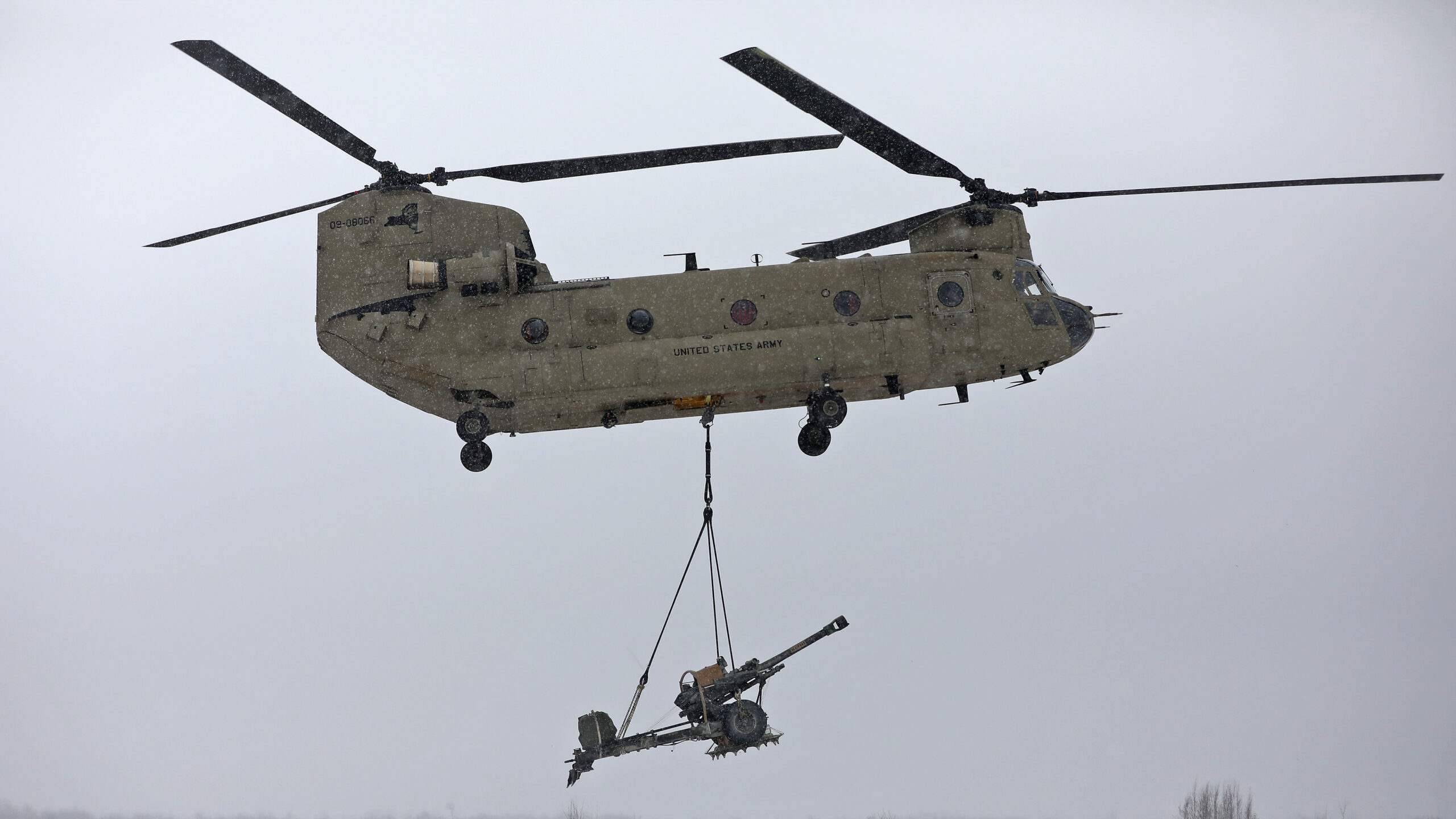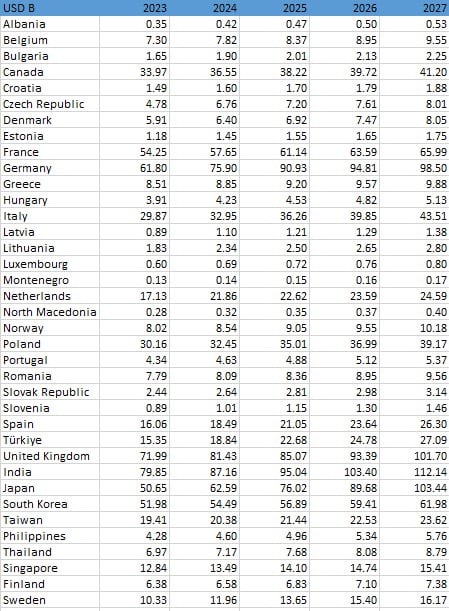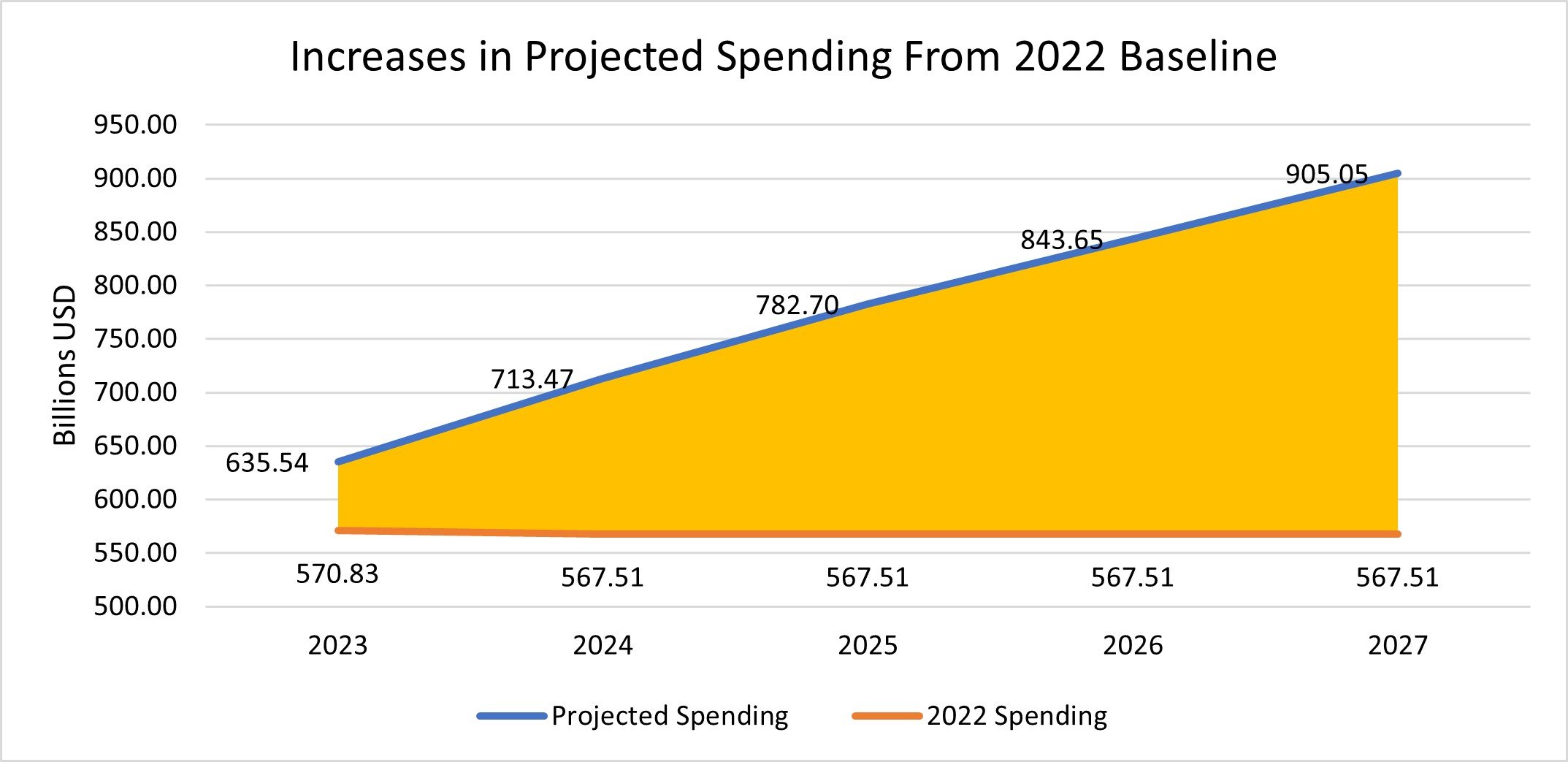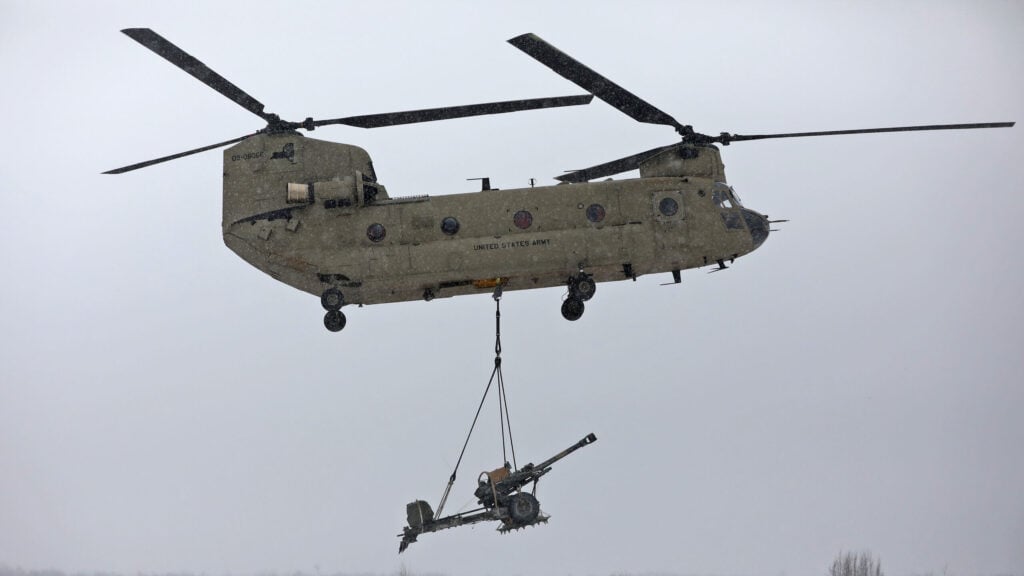Get Ya Wig Split
SENIOR MEMBER

- Joined
- Feb 22, 2017
- Messages
- 2,585
- Reaction score
- -2
- Country
- Location
$1T in new defense spending pledged by key US partners in 1 year: Analysis
In the last year, 37 nations have combined to announce defense spending increases of over $1 trillion, to be spent during the next five years, according to a new American Enterprise Institute analysis.

It took only days after Russia’s invasion of Ukraine in February 2022 for NATO nations to begin pledging increased defense spending. But in the rush, it became hard to keep track of everything announced. In a new analysis below, Bill Greenwalt and Emily Coletta of the American Enterprise Institute add up not just the NATO spending jumps but those of key Pacific partners and allies, for an eye-watering new total.
One of the unintended consequences of Russia’s invasion of Ukraine is that it “spooked the herd” of democratic nations. Combined with a growing awareness of the threat from China, key US partners and allies in Europe and Asia have pledged a dramatic increase in defense spending.
How dramatic? According to a new AEI analysis, since the start of the Ukraine invasion, 37 nations have combined to announce defense spending increases of over $1 trillion, to be spent during the next five years. While more spending will likely be needed, this is indeed a welcome beginning. The US should quickly pivot to working with these allies and ensure that not only are these promises real, but that any new spending leads to real military capabilities in the air, at sea, and on the ground.
Let’s not undersell that $1 trillion figure. It represents an astonishing turn of events. The end of the Cold War and the last Great Power competition of the 20th century initiated a belief among the allies that military spending was wasteful and unnecessary. Countries didn’t need to actually defend their territories, since large scale conventional wars were seen as relics of the past. Scenes of WWI-esque trench warfare and WWII-esque tank battles in Ukraine have overturned this delusional wishful thinking.
Of course, these are only promises and history does not look kindly on past allied pledges. Still, this time may really be different — and Washington should consider thank you cards for both Russian President Vladimir Putin and Chinese President Xi Jinping. While Putin’s invasion of Ukraine is a significant driver, Xi’s bellicose language and pressure on Pacific nations has created incentive for increased defense spending as well.
The majority of NATO countries have pledged to increase their spending in the last year. Just as significantly, important Asian allies, witnessing the coming together of the autocracies (China, Iran, North Korea, and Russia) have made their own planned increases known. What is most remarkable about this sea change in planned spending is that US allies have pledged to increase spending at much higher year-over-year rates than the US is currently planning. And more increases may be on the way as new allied spending promises continue to be revealed, the latest being the UK prime minister announcing a further $6 billion defense budget increase over the next two years.
The preponderance of future growth in the defense market will now no longer be in the US, but in Europe and Asia. Depending on where this money is spent, US allies could also enter a new era where they may lead in many new segments of defense innovation.


Any new increases, though, are building off a low baseline. It has been 17 years since NATO allies agreed to target 2% of GDP as their defense spending level. The beginning of the financial crisis a year later then stalled progress in ever meeting this target. In 2014, after Russia annexed Crimea, NATO allies reaffirmed that they would again work towards the 2% goal but only the UK, US and Greece — whose spending is largely the result of personnel costs, not strategic investments — were in compliance.
Things haven’t gotten much better since then as NATO Secretary General Jens Stoltenberg just announced that only a paltry seven out of the 30 NATO countries met that goal in 2022. Our Asian partners are only doing slightly better as only India, South Korea, Taiwan, and Singapore spend 2% or more of their GDP on defense. (No, the Asian nations are not under any obligation to hit that number, but it serves as a useful benchmark.)
Thus, the latest allied spending pledges have to actually happen to have any positive effect. Promising an increase and then not delivering though has been the norm, and autocrats may be counting on the democracies to revert back to burying their collective heads in the sand.
While defense spending top-lines are important, even more critical is the productivity of that spend. Will this, on average, collective $200-billion-a-year-in-new-spending actually enhance military capability? If the US and its allies focus these increases on personnel, social priorities, and keeping up with inflation, an opportunity will be wasted. If this money translates into actual defense hardware and systems we may actually be on the road to achieving effective deterrence.
For comparison, $200 billion a year is about $33 billion more than what the US now spends annually on the production of defense items. If this increase is put to work achieving more efficient defense production, increasing the resiliency of the collective allied industrial base, pooling R&D efforts, and specializing in capabilities according to each countries’ comparative advantage the US and its allies should be able to compete against the military might of both Russia and China.
The US should be supporting these outcomes. In addition to getting our own industrial base in order we should be working with our allies to create new sources of innovation and increasing the production of military goods within the democratic alliance. WWII and the Cold War were won not by the sheer will of the US but through the combined efforts of our allies and the scientific and engineering talents of those individuals who fled tyranny in Europe in the lead up to WWII and then again during the Cold War. It is important to remember as free peoples we are all in this together. The US needs to ensure that protectionist barriers and overly burdensome security requirements do not drive us apart.
Russia and China have called the democratic world to action. Our allies are beginning to answer that call and do what is necessary to support a diverse, free world. America needs to support them.
William C. Greenwalt is a nonresident senior fellow at the American Enterprise Institute and a former deputy undersecretary of defense for industrial policy. Emily Coletta is a research associate and project manager at AEI.

$1T in new defense spending pledged by key US partners in 1 year: Analysis - Breaking Defense
In the last year, 37 nations have combined to announce defense spending increases of over $1 trillion, to be spent during the next five years, according to a new American Enterprise Institute analysis.
MILITARY MUSCLE OF NATO @F-22Raptor @Hamartia Antidote
@beijingwalker
